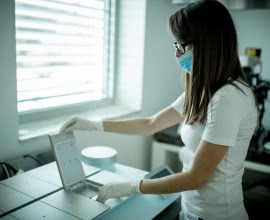A Better Time Than Ever? Why 2019 Looks Good for Infertility
Infertility is nothing new – millions all over the world are affected by it, both men and women. A number of conditions prevent couples from conceiving very regularly, and are a source of grief for many. What is new however, is the number of treatments now available, and the attention paid to such conditions with a view to surpassing them. Indeed, 2019 looks like a good place to be with regards to infertility, and couples struggling to conceive have good reason to feel hopeful. In this article we break some of the good news about infertility with the aim of bringing hope to aspiring parents.
Women are having children later in life
You’re not alone if you are past your twenties and wanting a child – in fact statistics show that the average age of birth is 28 upwards, and that teenagers are growing up with less of their friends getting pregnant, according to one report. This should be reassuring news for women who are focussing on their careers instead of thinking of families at this early time in their life.

We can track fertility better
Thanks to technology we can track and predict patterns of fertility more efficiently. One example of this is the boom in smartphone apps that allow you to input your data and predict periods of ovulation. There is now a growing market for such technology, and it is readily available through Apple and Google for all consumers. The apps often also aim to predict periods of PMS and period.
Sperm is getting star treatment
Recent methods in the laboratory show that taking sperm directly from the testicles might be a more effective way to conceive through IVF. This technique has already been employed for men with issues ejaculating, but is now proposed to be used more widely for artificial insemination. Scientists have their eyes on sperm as well as eggs, making sure all bases are covered in this growing field.
There are more fertility clinics than ever
IVF and fertility clinics have surged all across the globe. This means that customers have more access than ever before to fertility experts, and that they can be found easily. Another plus from this fact is that a market has emerged which drives competitive services and pricing. Medical tourism and IVF travel is a common thing these days – it involves prospective parents travelling abroad to get fertility treatments of all sorts.

Because it is more expensive in the USA and UK, people often find themselves in destinations like Prague, Czech Republic, where prices are lower but services are of a high standard.
We hope this list brings you some hope if you’re wanting to conceive – and be assured that technology and the market will only continue to grow, opening up ever new possibilities in this bright new world of fertility.
Sources:
https://www.healthline.com/health/pregnancy/fertility-apps#clue
https://risemedia.net/2019/07/25/infertility-treatment-market/














